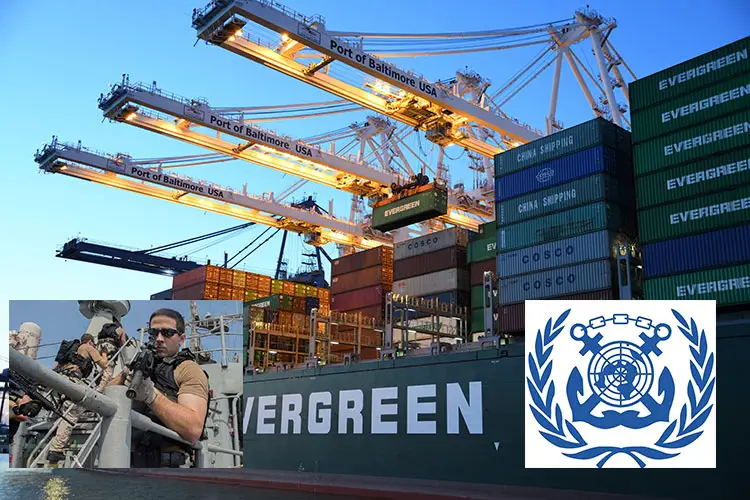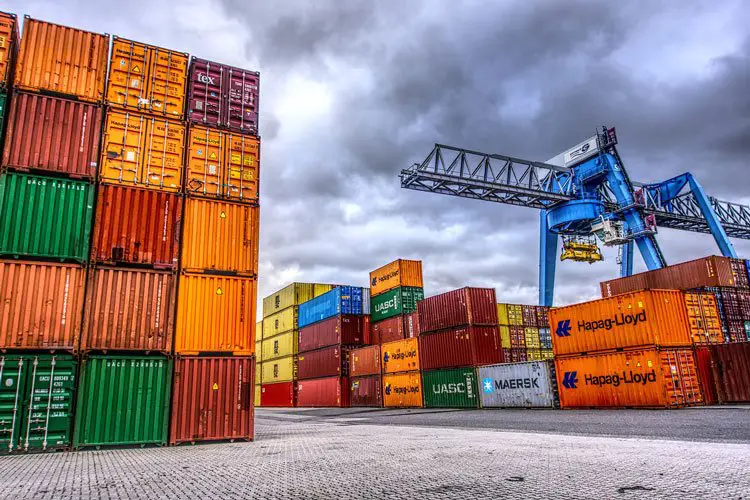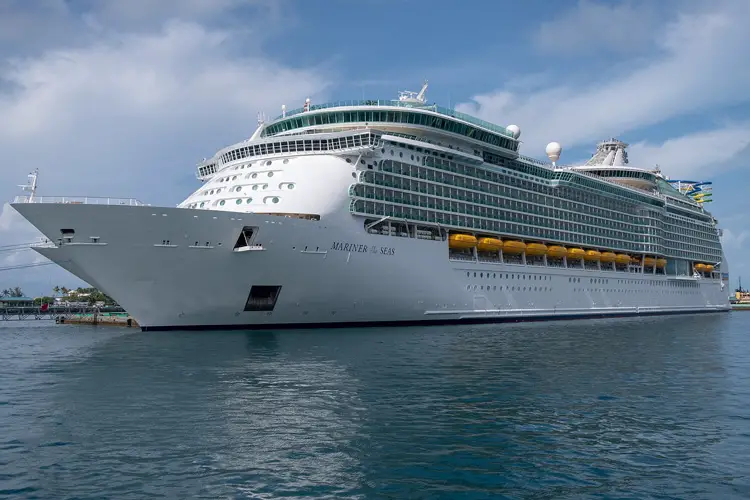ISPS Code: History, Objectives, Levels, and Requirements of ISPS Code

What is ISPS Code?
ISPS Code or the International Ship and Port Facility Security Code is a framework that provides ships and port facilities with guidelines to function when the ship’s security is threatened due to acts of terrorism.
The International Maritime Organization under the Safety of Life at Sea Convention decided to update the security measures taken by the ship and port crew after the rise in terror attacks in the wake of 9/11.
The aim of implementing the ISPS Code is to ensure the safety of the cargo, crew, and port infrastructure at the ship in the event of a lapse in security. To do so, the ISPS implements a variety of protocols or preventative measures that can reduce the chances of damage.
They do so by assigning definite roles and responsibilities to the government, ship crew, port crew, and the shipping company; improving the communication between different countries and their government; ease of gathering and assessing information, making the ship crew familiar with the ship security plan, restricting access to the ship, and preventing the introduction of unauthorized weapons.
History of ISPS Code
According to the International Maritime Organization, the International Ship and Port Facility Security Code or the ISPS Code was formulated in 2002 in the wake of the 9/11 attacks in the United States as part of the Safety of Life at Sea (SOLAS) Convention. The ISPS Code was implemented and came into action in 2004.
Before the 9/11 terrorist attacks, many countries like Austria, Egypt, and Italy had urged the International Maritime Organization, along with the International Transport Workers Federation to upgrade the international safety protocols as there were many lapses that were unable to deal with the threat of maritime terrorism.
Also read: Best Maritime Security Companies in the World
Aim and Purpose of ISPS Code in Shipping
In the wake of the 9/11 attack in the United States, the world government decided that there was a need for a robust set of new regulations that would successfully prevent such mishaps from taking place again.
The ISPS Code was formulated to ensure the safety of ships, ports, port workers, and travelers in the case of a security threat.
The main purpose of the ISPS code is to prevent terrorist attacks rather than the eradication of terrorism, as that is unreasonable. The governing body of the ISPS code reminds us that even though there is a lot of paperwork required, it is required to minimize atrocities against the port facilities, cargo, crew, and passengers. The ISPS code is a reminder that people need to stay vigilant.
The Purpose of the ISPS Code in shipping are:
1) Establishment of an international maritime order which promotes cooperation and coordination between different countries and their port authorities and transportation agencies.
2) The object of the ISPS code is to monitor the crew operations, along with cargo activity.
3) Ensuring that the port and ship crew are aware of the port and ship security planning.
4) Detection of the multitude of possible security threats onboard the ship and waiting at the port.
5) Enables the easy collection and exchange of security information between different shipping companies and ports.
6) Define the responsibilities of shipping ports, local transportation officers, and port and onboard officers.
7) To ensure that shipping vessels are not transporting explosive devices, unlawful weapons, and weapons of mass destruction.
8) To evaluate the security protocols in place in order to identify the shortcomings in the port security plan and ship security, and make improvements upon them.
9) The role of the ISPS code is to provide the involved parties with a procedure for assessing the ship and port security, and to facilitate the development of security plans that can effectively respond to security threats.
Structure of ISPS Code
The ISPS Code is divided into two parts which detail the security standards that need to be maintained on the ship and at the port. These parts are-
- Part A- Part A of the ISPS Code includes the provisions of SOLAS XI-2.
- Part B- Part B of the ISPS Code includes guidelines regarding the provisions of SOLAS XI-2, along with guidance for protective ships at the port.
ISPS Code Requirements
There are several functional requirements of the ISPS code which allow it to achieve its objective of ensuring the safety of ships, ports, ship crew, passengers, and port crew. These requirements are-
- Under the ISPS code, it is required for the member countries to gather and have access to information related to security threats.
- Every ship must have a security authority that has many responsibilities and duties depending on the security level.
- Ensuring the distribution of security-related information to the appropriate contacting government agencies.
- Maintenance and repair of communication protocols on the ships and ports.
- Port authorities and ship security are required to collect international data and disseminate it in issues concerning security threats.
- Under the ISPS code, international port authorities are required to provide training, drills, and exercises to the ship and port crew.
- Port authorities and ship authorities are required to share all data related to public security with the general public, ship owners, and international ports.
Responsibilities and Obligations of Shipping Companies Under the ISPS CODE
- Under the ISPS Code, the shipping company is responsible for designing a ship security plan that clearly states that the shipmaster has the authority to override authority and take control of a situation at times of lapses in security. The Ship Master is also obligated to contact the government in charge to secure the ship.
- The Shipping Companies must ensure that the ship master, the ship security officer, and the company security officer understand their duties and responsibilities under the ISPS code and have no restrictions to fulfill them.
- The shipping company is responsible for sharing the following information under ISPS Code Part B Section 6-
- Information of the charter party who has employed the ship’s services.
- Parties or entities that handle the employment of the crew on the ship at the time of charter.
- Parties, such as contractors, concessionaires, manning agents, and ship management, that are responsible for appointing shipboard personnel.
What is the Certificate Issued to a Port and Ship under the ISPS Code?
The certificate issued to the port under the ISPS code is known as the “Statement of Compliance of a Port Facility.” Whereas the ISPS certificate issued to the ship is known as “International Ship Security Certificate or Interim International Ship Security Certificate.”
Who Should Comply with ISPS Code?
SOLAS or the International Convention for the Safety of Life at Sea is a treaty that aims to provide protocols for the construction of ships, the provision of life-saving clothes and boats, the use of radio communication, and the implementation of safety in navigation.
ISPS maritime code is a part of the SOLAS treaty, therefore, all of the countries that have signed the SOLAS treaty and are engaged in international shipping must abide by the ISPS code.
Passenger and cargo vessels that have a holding capacity of 3,000 tonnes or more must comply with the code. Other shipping vessels, ports, and companies that need to comply are-
- Mobile offshore drilling units.
- Shipping companies that transport merchant goods and are engaged in facilitating travel across the ocean.
- Port facilities that serve passenger ships, ships engaged with international travel, and ships meant to transport cargo and merchant goods.
- High-speed passenger ships must also comply with the ISPS code.
Who Does Not Need to Comply with ISPS Code?
Generally, ISPS code requirements are not applied on ships with a cargo of less than 500 gross tonnes, warships, wooden ships, fishing boats, and non-commercial yachts. Other shipping vessels that don’t need to comply are-
- Pleasure crafts.
- Harbor crafts and small vessels that operate within port limits.
- Wooden ships of primitive build.
- Coast guard ships and naval auxiliaries.
- Ships operated and owned by the government. Also, ships are used only on government non-commercial service.
Penalty of Non-Compliance with ISPS Code Requirements and Certificate
If a ship is unable to show a valid certificate upon arrival, the port authority is within its right to either refuse the ship entry into the port, curtail its operation, detail the boat, or expel it from the port until the ship can provide a valid certificate. Governments and local authorities are well within their rights to refuse entry to those ships that have failed to comply with the requirements mentioned in the ISPS code.
Duties and Responsibilities of SSO
Under the ISPS Code, every ship must have a designated SSO (Ship Security Officer). The responsibilities and duties of an SSO are-
- It is the responsibility of the SSO to maintain the ship’s security plan and its amendments.
- The SSO must conduct regular security inspections to ensure that the ship workers are taking the necessary security measures.
- The SSO is required to conduct regular evaluations of the ship safety plan and propose modifications to the owner based on their assessment.
- The role of the SSO is to coordinate the ship’s security plan with security aspects of the ship’s stores and port authorities.
- One of the duties of the SSO is to enhance the shipboard personnel’s security awareness and vigilance, along with providing adequate training.
- The role of the SSO is to report all security incidents to the port authority, government, and ship owners.
Security Levels of ISPS Code
There are three security levels under the ISPS Code:
1) Security Level 1 (Normal Threat Level)
Security level 1 is also known as the average or normal threat level. At this level, the shipping vessels and ports function in a normal environment. At this level, the ships and ports are required to maintain minimum protective measures to prevent security incidents on board.
At this level, the ships are expected to take the following security precautions-
- The ship workers must be aware of the ship’s security plan and have the necessary training.
- ISPS Security Drills: Routine mock drills need to take place to ensure that the safety plan in place is working properly.
- The ship security officer must ensure that authorized persons are the only people to have access to restricted areas.
- Under the first security level, it is required to supervise the ship’s storage and handling of cargo, along with the communication technology available.
2) Security Level 2 (Heightened Threat Level)
At the second level of security under the ISPS code, the ship and port are at an increased risk of security risks. It is up to the security experts on the ship and at the port facility to decide the time frame of this threat and the additional security measures that need to be implemented.
The following security measures are required under ISPS security level 2-
- The ship security officers are required to assign crew member patrol duties of the deck areas during the silent hours in order to prevent unauthorized boarding.
- Regularly conducting a search of the ship.
- Visitors and passengers are expected to be escorted while on board the ship.
- Unauthorized areas should be identified and need to be closed off to the general public with proper locks and even security.
- The ship security officer must limit the access points to the ship by identifying them and barricading them properly.
- Under the second security level, the SSO is required to restrict entry into the shoreside of the ship.
- The security experts must frequently search the personal effects and vehicles of the people who have embarked on the ship.
3) Security Level 3 (Exceptional Threat Level)
Security level 3 is also known as the exceptional threat level. At this level, lapses in security are imminent. Therefore, port and vessel security experts must work with government agencies during this level to undertake security measures.
The following security measures must be taken by the Ship Security Officer under security level 3-
- The SSP mandates under security level 3 to provide limited access to the single controlled access point.
- Conduct a full or partial search of the ship.
- Non-crew persons must be closely supervised while on board the ship.
- Conduct regular evacuation drills of the ship.
- Suspend embarking on and disembarking from the ship
Challenges in the Implementation of ISPS Code
Following rules and regulations is not always easy and in some cases, like with the ISPS code, can lead to several challenges during the implementation. Some of the challenges or difficulties shaped by port and ship workers are-
1) Challenges in the implementation of the ISPS code can be brought on by a lack of training and understanding of procedures.
2) The implementation of the ISPS code can add to the duties and responsibilities of the ship and port crew, leading to pushback if the importance of the ISPS code is not relayed to the crew beforehand.
3) The implementation of the ISPS code increases the cargo-to-gate lead time due to increased procedures to maintain security.
4) The embarking and disembarking of cargo is significantly disrupted at the port when the security level rises.
5) Non-compliance with the ISPS code has strict legal repercussions. Meanwhile, to ensure that the security level of the ship is properly analyzed and implemented, the crew must do additional chores, which is oftentimes very time-consuming.
6) Many of us might not know this but seafarers deal with a lot of stress and anxiety on board the ship and this affects their ability to operate heavy machinery significantly. Therefore, there are many guidelines in place, even under the ISPS code, to ensure that the ship crew gets their break.
However, at times of increased security threats, many governments around the globe prohibit this leave for the ship crew. This is not healthy for the ship crew.
Advantages of ISPS Code
These are the advantages of the implementation of the ISPS Code-
- Through the implementation of the ISPS code, the working environment for the ship crew and port crew is made safer.
- The implementation of the ISPS code has led to the creation of a better documentation procedure.
- Because of the implementation of the ISPS code, embarkment and disembarkment of cargo and personnel are monitored and supervised to ensure safety.
Disadvantages of ISPS Code
While the implementation of the ISPS Code has made the lives of the ship workers and port crews a lot safer, whilst simultaneously making sure that ships and the cargo are also safe in transit. However, there are some disadvantages as well-
- The ISPS code has increased the operating costs of the vessel and the port.
- When the security level rises from 1 to 2 and eventually 3, the speed at which work is done is affected considerably.
- The implementation of the ISPS code has increased the amount of procedures, security measures, and documentation that the ship crew and the port crew must do regularly.
- The implementation of the ISPS code led to an increase in the workload of the seafarers, especially under the second and third security levels.
Important Terms Used in the ISPS Code
Here is the full form of ISPS in shipping terms.
1) Company Security Officer (CSO)
CSO is responsible for regularly conducting the ship security assessment, the development of the ship security plan, and coordinating the port facility security officers and the ship security officer.
2) Ship Security Assessment (SSA)
Ship Security assessment is the regular assessment of security hazards and threats on a ship. Usually conducted under the purview of the Ship Security Officer and the Company Security Officer.
3) Port Facility Security Assessment (PFSA)
Just like ship security assessment, port facility security assessment is conducted to analyze the port’s operations to determine the parts which are susceptible to security attacks.
4) Port Facility Security Plan (PFSP)
The port facility security plan is a plan developed to ensure that the cargo, port facility, and the port crew are safe when there are lapses in the port’s security. This plan is usually developed and implemented by the port facility security officer.
Useful Link: IMO SOLAS and ISPS


![Straddle Carriers [ULTIMATE GUIDE] 3 Straddle Carriers [ULTIMATE GUIDE]](https://www.maritimemanual.com/wp-content/uploads/2021/07/straddle_carrier.jpg)




